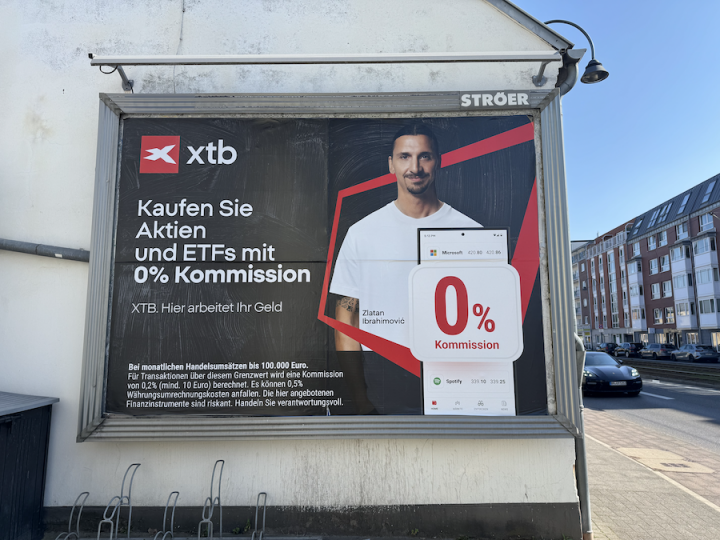
German retail investors put nearly all equity fund inflows into exchange-traded funds in the first half of the year, cementing the country’s role as Europe’s largest ETF market. The surge has reinforced fee pressure on asset managers and raised questions about the future balance between passive products and more complex structures such as the Eltif.
According to German fund industry association BVI, equity funds attracted 19.6 billion euro of new money in the six months to June, of which 19.3 billion euro went into ETFs. Across all asset classes, ETFs accounted for 423 billion euro in reported assets, though the association estimates Germany’s total ETF market at more than 600 billion euro once assets outside its reporting perimeter are included. This makes Germany by far the largest national ETF market in Europe.
 “Among many younger people, ETFs are not an alternative. They are the investment of choice,” Rudolf Siebel, managing director at BVI, told Investment Officer.
“Among many younger people, ETFs are not an alternative. They are the investment of choice,” Rudolf Siebel, managing director at BVI, told Investment Officer.
Retail power
The inflows highlight how quickly German savers have embraced ETFs. Germany now counts more than thirty million savings plans, with about one-third invested in ETFs. Monthly contributions typically amount to several hundred euro, building steadily into long-term positions.
The pandemic accelerated this shift, as neo-brokers and gamified trading apps lowered barriers and pulled in new investors to global equity ETFs tracking indices such as the MSCI World and the S&P500. Billboard advertising for ETFs is visible throughout the country.
For many Germans, ‘MSCI World’ has become shorthand for ETFs, reflecting their preference for a simple, diversified index product. The popular index covers more than 1,300 companies across twenty-three developed markets, and is currently tracked by twenty-one ETFs.
The German surge has come despite a lack of tax breaks. Capital gains, including dividends, above 1,000 euro per year are flat taxed at 25 percent, plus a regional solidarity surcharge tax and, if applicable, a church tax.
BVI supports the creation of a new tax rule allowing investors to accumulate their 1,000 euro tax-free threshold over several years, but Siebel acknowledged such a reform is currently not on the lawmakers’ agenda.
Fund industry in flux
While retail investors in recent years have embraced ETFs, institutional adoption began earlier. BVI estimates that institutional investors account for about two-thirds of total ETF assets in Germany. Nevertheless, pension funds and insurers, traditionally the largest investors in German open-ended Spezialfonds—Germany’s 2,200 billion euro version of alternative investment funds, continue to favor active mandates and fixed income strategies.
“Retail is where the real momentum in net sales is now,” said Siebel.
The strong appetite for ETFs comes against the backdrop of a growing fund industry. Total assets under management in Germany reached 4.6 trillion euro by mid-year, up nearly 1.3 trillion euro in five years.
In the first half of 2025, retail funds attracted 47.8 billion euro in net inflows. Bond funds led the sales list with 22.7 billion euro, primarily into short-term and corporate debt strategies. Balanced funds collected 2.7 billion euro, while money market funds absorbed 5.7 billion euro.
By contrast, property funds continued to shrink, recording outflows of 3.7 billion euro, with assets falling from 122 billion euro at the start of the year to 118 billion euro. Equity funds remain the largest category in retail funds overall, with 825 billion euro in assets, followed by balanced funds with 366 billion euro and bond funds with 286 billion euro.
Closed-ended funds, a small but expanding corner of the market, now account for 63 billion euro, up from 20 billion euro in 2020. Private equity has become the largest segment, representing almost half of assets, while property funds have fallen to about one-third. The market remains heavily institutional, with Spezialfonds managing 94 percent of assets.
Margin pressure
For the industry, the popularity of ETFs is a double-edged sword. On one hand, they have opened up financial markets to millions of first-time investors. On the other, they have reinforced structural pressure on margins.
“ETFs are a revolution in asset management. They lower costs, and create freedom for investors due to their intra-day tradability,” Siebel said. “But they also change the economics of our industry.”
With passive products, fees are compressed to levels where only the largest providers can operate profitably at scale. This forces managers to invest heavily in technology, distribution, and compliance, while competing in a race to the bottom on price. Smaller firms risk being squeezed out unless they can differentiate through active strategies, alternatives, or niche offerings.
Latecomers to the ETF market face the steepest barriers. If an ETF raises only twenty million euro, it is barely enough to cover data costs. “You need hundreds of billions if you want to compete internationally,” Siebel said.
Eltifs as counterweight
One possible counterbalance lies in the Eltif, redesigned under the 2.0 framework to channel retail savings into infrastructure, venture capital, and other illiquid strategies.
Siebel acknowledged the potential but stressed the challenges.
“Eltifs are more demanding products, with liquidity and reporting hurdles. They require a different level of investment advice,” he said. Operational demands are also higher, from fund accounting to distribution networks, making them far from a quick fix for margin erosion.
For asset managers, the contrast is stark: ETFs squeeze costs through scale and standardization, while Eltifs promise higher margins but demand significant investment and carry liquidity risk.
European context
Germany’s surge comes within a wider European boom. Across Europe, ETFs grew into a 2.1 trillion euro industry by the end of 2024, drawing record net inflows of 269 billion euro in that year alone, according to EFAMA. The market is overwhelmingly Ucits-based, with Ireland and Luxembourg accounting for more than 90 percent of domiciled assets. Equity ETFs dominate at about three-quarters of holdings, bonds about one-fifth, with investors directing the largest allocations to U.S. and global large-cap equity exposures.